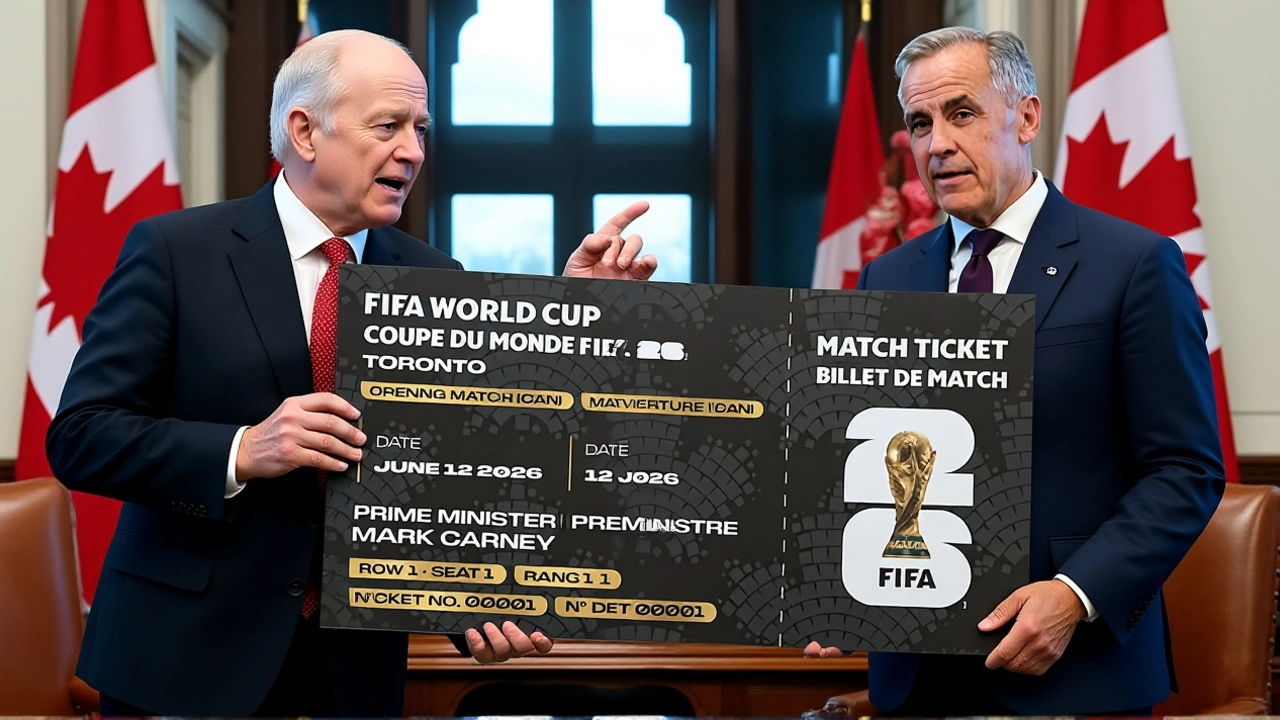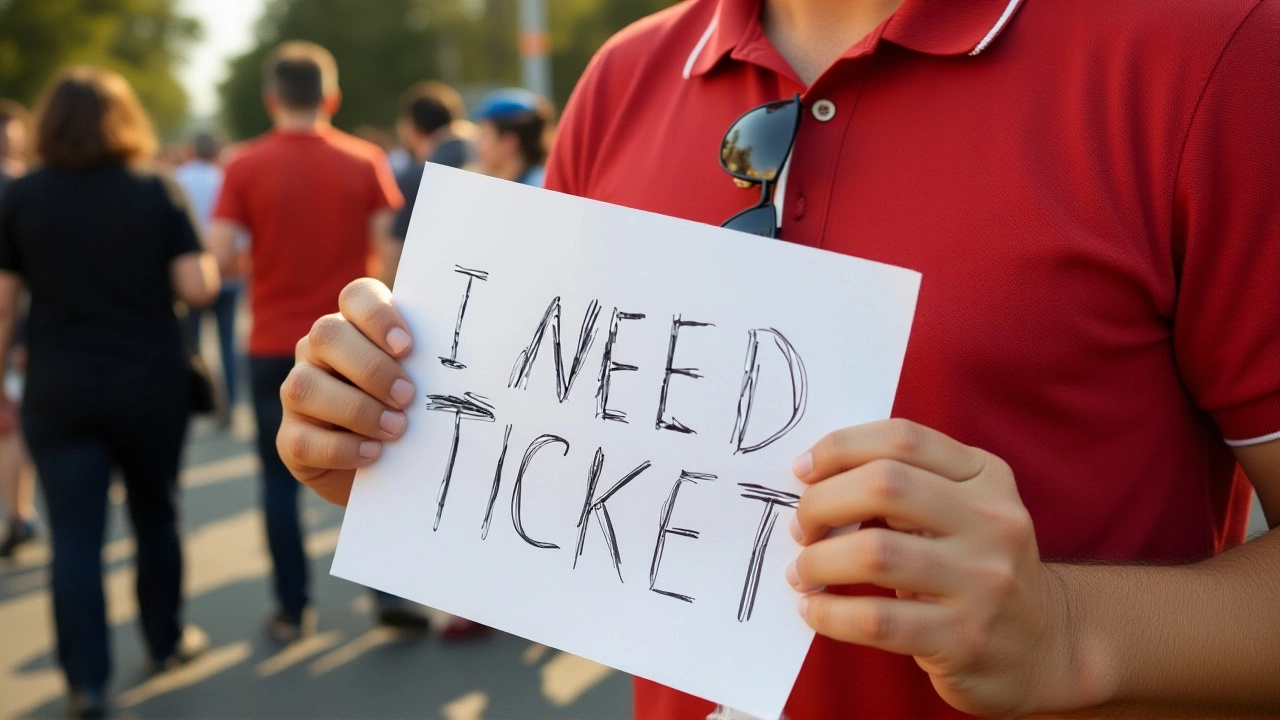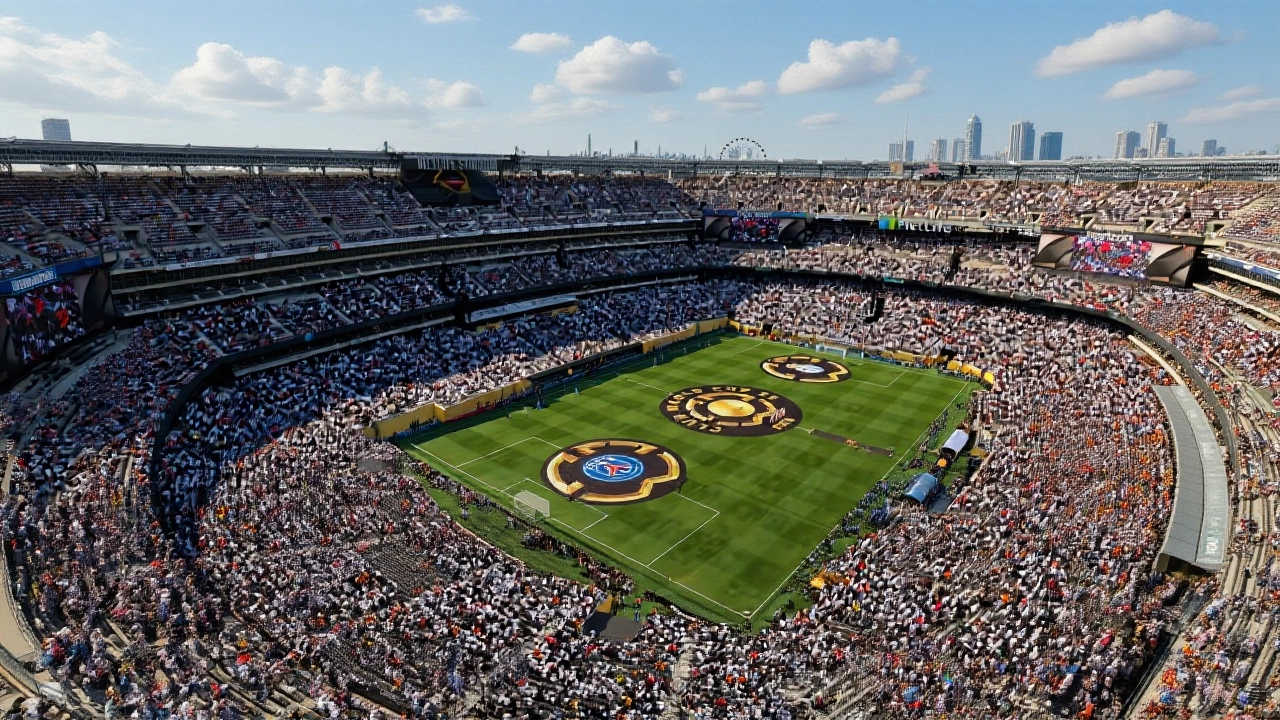More than FIFA ever imagined — 4.5 million fans — rushed to secure tickets during the first presale for the 2026 FIFA World CupNorth America, a staggering surge that turned the September 9–19 Visa credit card-exclusive draw into the most competitive ticketing event in sports history. The numbers, released by FIFA on September 20, 2025, weren’t just high — they were historic. And they came from every corner of the globe: 216 countries and territories applied, proving that football’s pull isn’t just global — it’s visceral. The United States dominated the applicant pool, as expected, but Mexico and Canada, the other two host nations, weren’t far behind. Even more telling? Fans from Germany, England, Brazil, Argentina, Colombia, Spain, and Italy made up the rest of the top ten. This wasn’t just a regional event. It was a planetary phenomenon.
Why This Presale Broke Records
The 2026 FIFA World CupNorth America is the first to feature 48 teams — up from 32 — meaning 104 matches across 16 cities. That’s not just more games. It’s more chances. More access. More chaos. And fans responded with urgency. The Visa presale was deliberately narrow — only cardholders could enter — likely to filter out bots and scalpers. Yet even with that gatekeeping, the system was flooded. FIFA’s own systems reportedly slowed under the load. One insider told me, "We thought we’d hit two million. We didn’t even see four million coming. It was like a digital stampede." The scale is unprecedented. The 1994 World Cup in the U.S. sold 1.8 million tickets across 52 matches. This time, with double the teams and nearly double the matches, demand isn’t just matching — it’s exploding. And it’s not just fans from host nations. People from Japan, Nigeria, Chile, and even tiny Pacific islands applied. "It’s not about geography anymore," said Gianni Infantino, FIFA President. "It’s about belonging. If you love the game, you belong at this World Cup."Who Gets Tickets — And Who Doesn’t
Here’s the catch: being selected doesn’t mean you get tickets. Selected applicants will receive email notifications starting September 29, 2025, with a 24-hour window to buy during a designated time slot. But with 4.5 million applicants and only 3.5 million tickets available for the entire tournament, the math is brutal. FIFA caps purchases at four tickets per match and 40 total per person. That’s generous — if you’re only going to one game. But if you want to see Brazil vs. Germany in Los Angeles, Argentina vs. Spain in Mexico City, and the final in New York? You’re competing against thousands.Some fans are already planning multi-city trips. Others are forming groups to pool applications. A Reddit thread in Toronto has over 12,000 members sharing tips on how to maximize odds — from using multiple Visa cards (if you have them) to timing email checks at 12:01 a.m. ET. One fan from Chicago told me: "I applied three times — my card, my wife’s, my brother’s. If I get one slot, I’m going. No matter the cost."

The Resale Lifeline and FIFA’s Anti-Scalper Play
FIFA isn’t leaving fans stranded. On October 2, 2025, the official FIFA Ticket Exchange Platform launches at FIFA.com/tickets. This isn’t eBay. It’s a secure, verified resale system where fans can list tickets they can’t use — at face value, no markup allowed. Mexican residents get early access to a localized version of the platform, a nod to the country’s massive fanbase. This move is critical. In past tournaments, scalpers raked in millions. FIFA is betting that transparency will win over exploitation.And they’re not stopping there. The next phase — the Early Ticket Draw — opens October 27, 2025, open to the public. No Visa requirement. No exclusivity. Just pure, unfiltered demand. And that’s when things might get even wilder.
What This Means for North America
The economic ripple is already being felt. Hotels in Vancouver, Guadalajara, and Kansas City are booking out a year in advance. Airlines are adding transborder routes. Local businesses in host cities are preparing for crowds unlike anything since the 1994 World Cup — and that was just the U.S. This time, it’s three countries. Three currencies. Three cultures. One tournament.For the U.S., it’s a chance to cement its place as a soccer powerhouse. For Mexico, it’s national pride on display. For Canada, it’s a global spotlight rarely seen. And for fans? It’s a once-in-a-generation chance to witness history — not just as spectators, but as participants.

What’s Next?
The tournament kicks off June 11, 2026, and runs through July 19. The opening match will be in Mexico City. The final? Likely in New York/New Jersey. But before then, the real drama is happening online. With 4.5 million applicants and limited tickets, disappointment will be widespread. That’s why FIFA’s next move matters: the official resale platform. If it works, it could become the gold standard for major events. If it fails? Expect a black market to explode.One thing’s certain: the world didn’t just sign up to watch the World Cup. It signed up to be part of it.
Frequently Asked Questions
How many tickets are available for the 2026 World Cup, and how does that compare to demand?
FIFA has not released an exact total, but estimates suggest around 3.5 million tickets will be available for the 104 matches. With 4.5 million applicants in the first presale alone — and more phases coming — demand far outstrips supply. That means even those who get a purchase window may still miss out, especially for high-demand matches like the final or U.S.-Mexico clashes.
Can I buy tickets from third-party sellers like StubHub or eBay?
FIFA strongly warns against unofficial sellers, as tickets bought outside FIFA.com/tickets may be invalid or fraudulent. The official resale platform launching October 2, 2025, is the only safe alternative. Tickets sold there are verified, transferable, and priced at face value — no scalping allowed. Buying elsewhere risks being denied entry at the stadium.
Why was the Visa presale limited to credit card holders?
FIFA partnered with Visa to reduce bot activity and scalper exploitation. Requiring a verified payment method helped ensure applicants were real people. It also aligned with Visa’s global marketing goals. While this excluded many fans, it created a more controlled entry point before opening the draw to the public on October 27, 2025.
What’s the difference between the Visa presale and the Early Ticket Draw?
The Visa presale was exclusive to Visa cardholders and ran from September 9–19, 2025. The Early Ticket Draw, opening October 27, 2025, is open to everyone — no card requirement. This second phase will likely see even higher demand, as fans who missed the first window or didn’t have a Visa card get their chance. Both phases use a randomized draw system, not first-come-first-served.
Are hospitality packages still available, and how do they differ from regular tickets?
Yes, single- and multi-match hospitality packages are still available through FIFA.com/hospitality. These include premium seating, food, beverages, exclusive lounges, and sometimes transportation or merchandise. They’re significantly more expensive — often $1,000+ per match — but guarantee entry and a high-end experience. Regular tickets, by contrast, start as low as $10 for group-stage matches in smaller venues.
Why is the 2026 World Cup such a big deal compared to past tournaments?
It’s the first World Cup with 48 teams and 104 matches, expanding access for more nations. It’s also the first hosted by three countries since 2002, and the first in North America since 1994. With soccer’s popularity surging in the U.S. and Canada, and Mexico’s massive fanbase, this tournament could set new viewership and attendance records — potentially becoming the most-watched sporting event in history.
